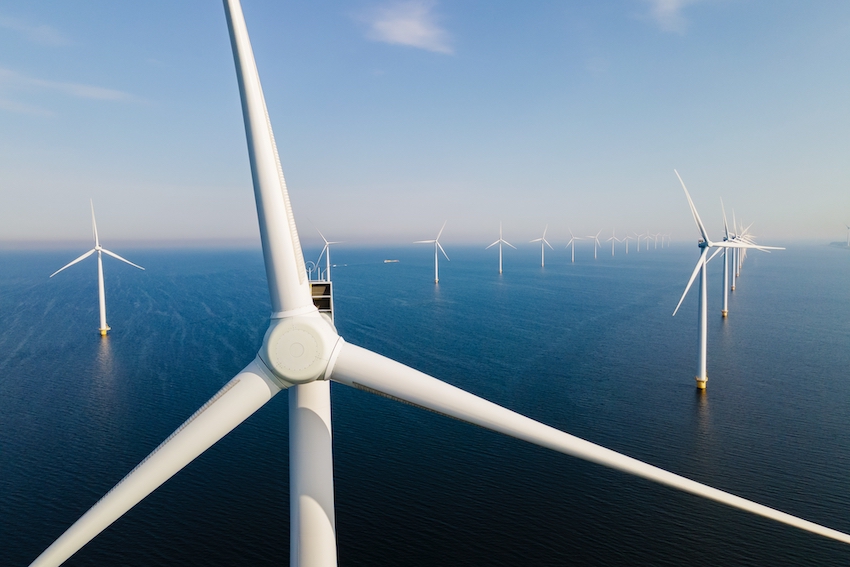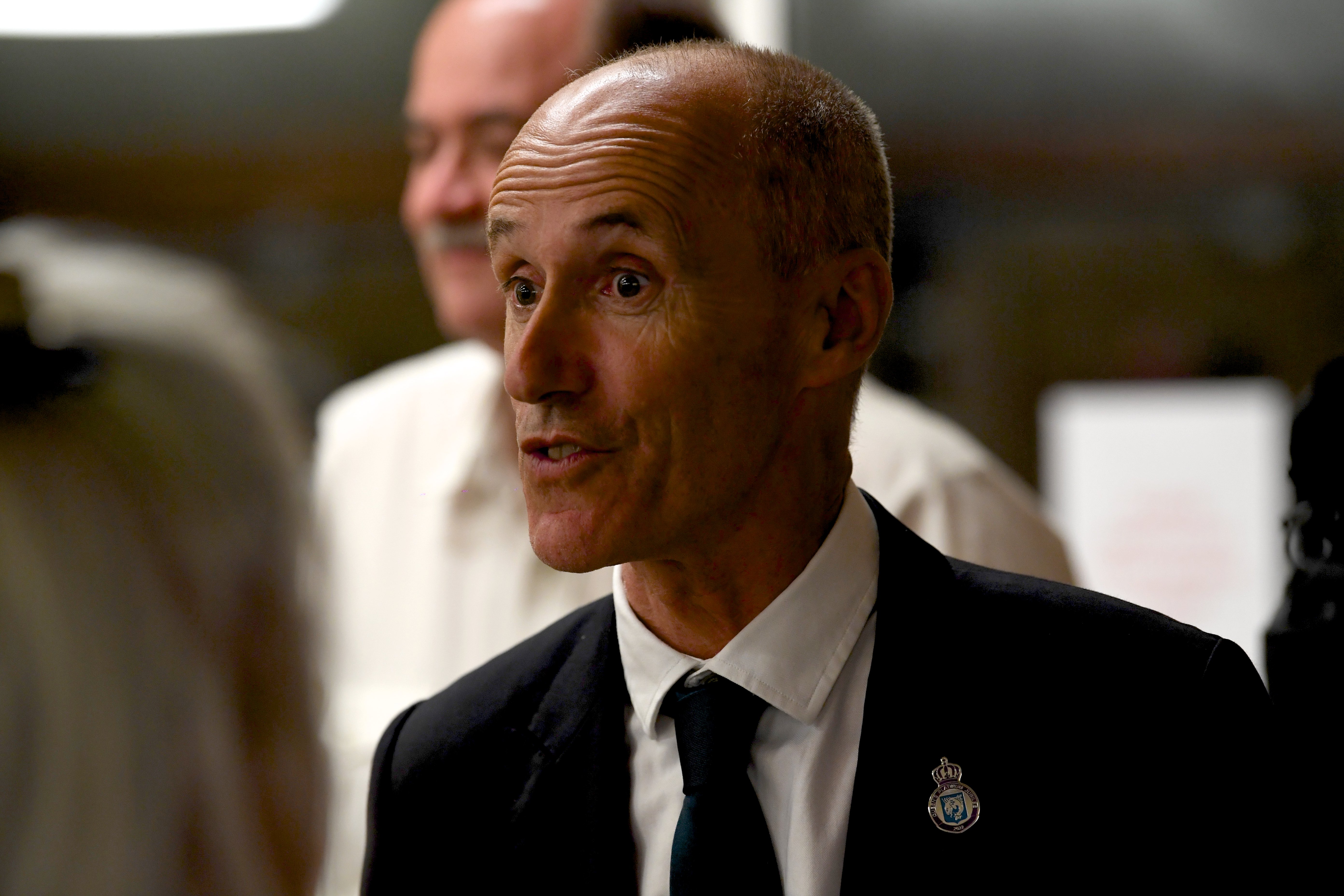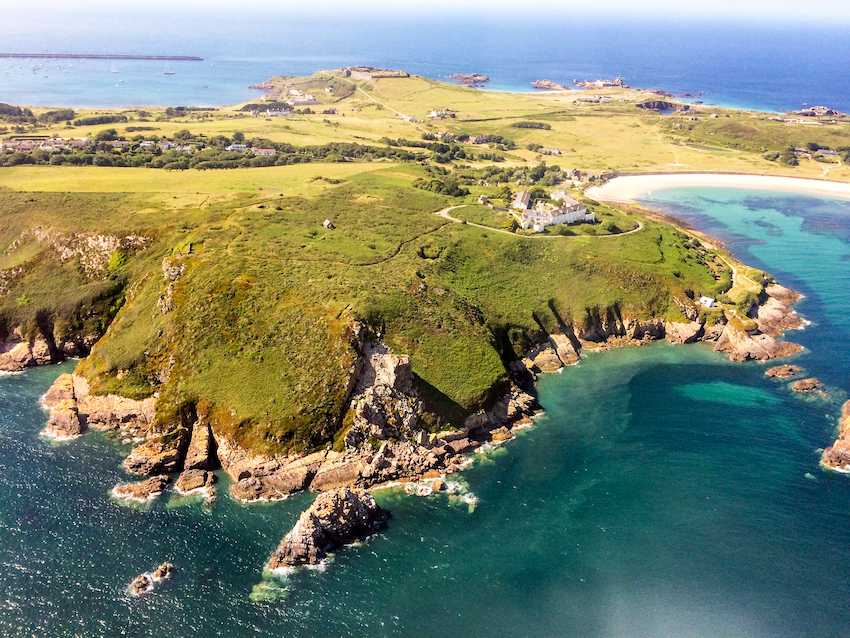


Windfarms, tidal turbines and solar panels, the governments of the Channel Islands have been sounding out a future where the lights aren’t kept on through the burning of fossil fuels, but instead powered by renewable energy.
Policy Letters have been written, groups have been developed, and lofty sounding plans have been voted through, but how close is this renewable future? And more importantly, will it actually happen?
Express takes a look at the plans being drawn up by Guernsey, Jersey and Alderney, aiming to capitalise on alternative sources of power.
The responsibility of planning out Guernsey’s future energy generation has fallen in the lap of the Committee for the Environment and Infrastructure, who recently released a mammoth electricity strategy to be debated by the States Assembly.
In it, E&I has proposed that Guernsey finally build a second interconnector – this time directly to France – and bolster the 100MW drawn through it with both solar and wind power. It aligns with the Energy Policy 2020-2050, which set Guernsey’s carbon neutral target as 2050 and was voted through in 2020.
The strategy was developed in preparation for an increase in island electricity usage from 90MW to 150MW before 2050, with the CEO of Guernsey Electricity arguing that the island’s link to Europe through Jersey and a deteriorating power station means “we already don’t have enough low carbon capacity”.

The subsea cable provides Guernsey with 60MW and – by prioritising renewable energy through the cable of up to 90% - has helped the island achieve a 37.5% decrease in carbon emissions compared with levels back in 1990.
However, the island’s demand consistently tips over the 60MW level, forcing Guernsey Electricity to fire up its fossil fuel power station.
The long-gestating electricity strategy, if approved, would see Guernsey get more than half of its future electricity requirement through wind, 10% through solar and the rest through a second interconnector to France. The power station would enter a process of decommissioning certain generators, with the remaining units only being used in emergency situations.
Jersey’s Carbon Neutral Roadmap supersedes various other pieces of work and outlines the journey the island should take in attempting to get to net zero by 2050.
It was produced by Strategic Policy, Performance and Population and proposes several steps the island should take to begin drastically reducing its carbon emissions. These include a ban on new petrol and diesel vehicles by 2030 and investment in expanding beds of seagrass that can capture greenhouse gases. The cost of achieving net zero has been estimated to cost £250million.
One of the suggestions within the roadmap is the construction of a windfarm to help Jersey reach 50% renewable energy between 2040 - 2050.
The government has since been approached by several private companies keen to help fund and develop a windfarm. While not explicitly mentioned, it has the potential to tie into Guernsey’s aspirations for harnessing wind, as E&I’s strategy suggests that any future project could either be publicly owned or part of a larger, multi-jurisdictional array.
Most recently, Jersey’s Environment Minister, Deputy Jonathan Renouf, said that a windfarm could happen “within eight years” and that conversations about wind power will “certainly” be on the agenda during any future discussion with Guernsey.

Pictured: Deputy Renouf said: "If we go ahead, we will certainly still do so before 2030. Six to eight years is the rough period of time it takes from the moment a wind farm is approved, so we could have one within eight years."
Alderney, unlike Guernsey and Jersey, has no interconnector and is highly reliant on imported oil to generate electricity and heat for homes. This is not only unsustainable but miles away from the green future Guernsey and Jersey are striving for.
However, Alderney’s ‘Island Plan’ released early last year included the development of renewable energy as a priority for the island.
Bill Abel leads the Energy Working Group and said solar panels could generate power at 10 - 11p per unit while Alderney’s own wind turbine could generate power aslow as 5 – 6p per unit. Despite Alderney having infamously powerful tides, it was said at the time that developing tidal power generation was simply too expensive, and that solar was the preferred route.
A year later, Mr Abel announced that solar is still “a key part of our strategy“ but that the Energy Working Group is now seeking interest from third parties to help develop tidal power generation.

When asked what has changed over the past year, Mr Abel said:
“We are still of that opinion [tidal is too expensive] even though we have seen the UK’s Contracts for Difference (OFGEM) setting prices at 17.8p per unit for large scale installations.
“However, there has been interest from some developers to install smaller units in Alderney’s waters, and we see these as opportunities for them and for the future of power supplies to Alderney and the Bailiwick. We will only move forward if there is an economic package being offered.”
While Guernsey Electricity continues to bemoan its ageing fossil fuel plant, the ambitious Electricity Strategy is just that, a strategy and no more. It hasn’t even been approved yet. The President of E&I, Deputy Lindsay de Sausmarez is keen that it goes for debate in July, but it’ll have to compete for space with the recently announced Government Work Plan debate and will likely be kicked down the road until August or September.
Even then, Express understands that several amendments are more than likely to be brought forward and it wouldn’t be a surprise if the wind element was forced out entirely.
Despite this, support for the document has been strong, with the Chamber of Commerce and Guernsey Electricity highlighting that the alternative option – retain the status quo – would actually cost the island more.
In Jersey, the Carbon Neutral Roadmap may be ambitious, but its implementation has been slow. The only action taken so far has been to hand out subsidies for electric bikes and boilers, implemented through an island-wide lottery.
While Deputy Renouf waxes lyrical about a windfarm materialising within eight years, the island will have to wait for detailed funding of the roadmap to be debated within the Government Plan later this year before anything actually happens.
And while the plans for Alderney’s renewable future were revealed more than a year ago, very little but conversation has happened since.
However, a report with regard to the request for proposals will be submitted to the States as part of the July Billet d’Etat in July, including investigations into tidal power, as well as solar and wind, and a call has been made for private investors to pitch ideas to the States of Alderney to try and harness tidal power.
The will to change has been a long time coming and it's encouraging that change is on the horizon, but how fast that change will be enacted is yet to be seen.
Comments
Comments on this story express the views of the commentator only, not Bailiwick Publishing. We are unable to guarantee the accuracy of any of those comments.